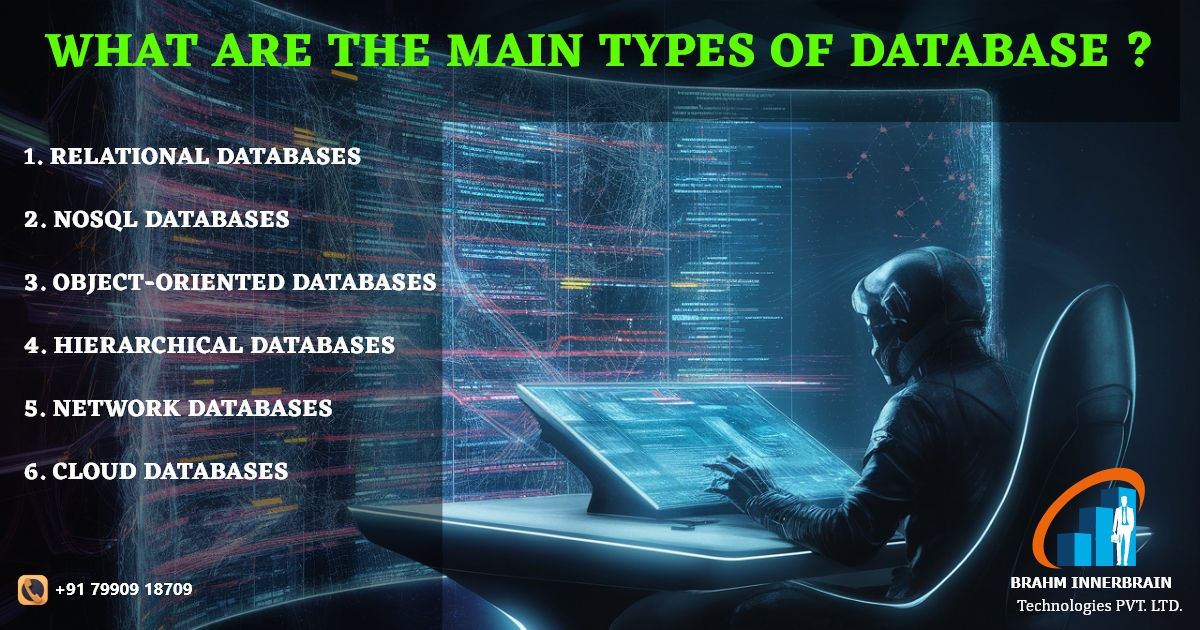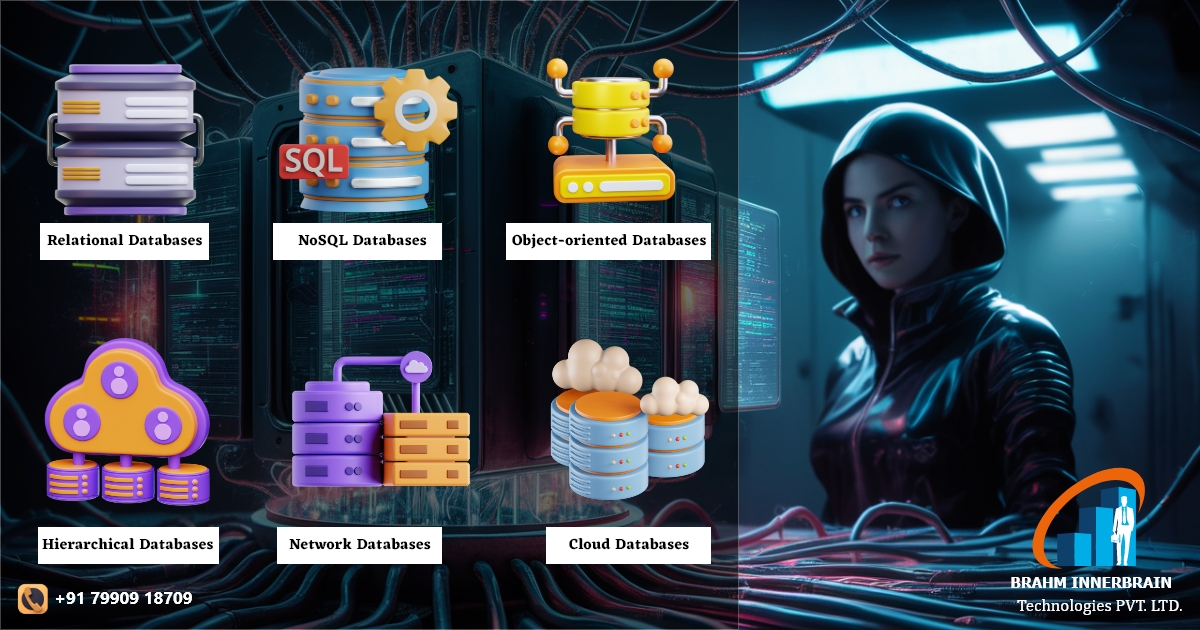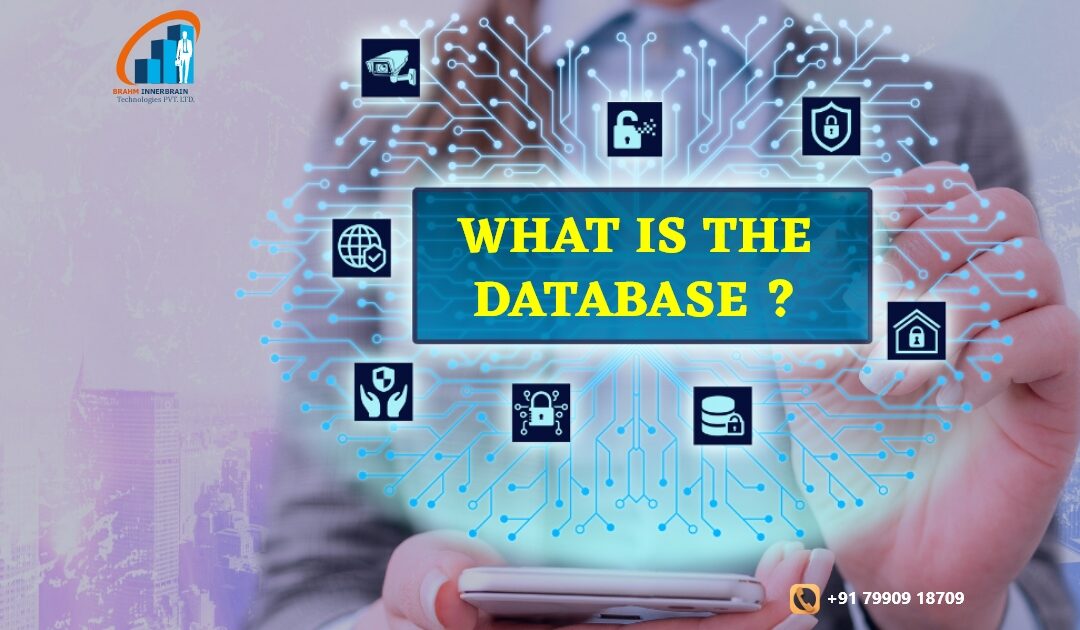A database is the electronic collection of data, usually operated by a database management system (DBMS). It also enables users to store their data retrieve data effectively and manage it. Databases now have an important role in many applications, whether for business operations or scientific research and can handle vast amounts of information systematically.

What are the main types of databases?
1. Relational Databases
2. NoSQL Databases
3. Object-oriented Databases
4. Hierarchical Databases
5. Network Databases
6. Cloud Databases

1. Relational Databases
Relational databases are perhaps the most widely used database today. In a relational database, data exists in the form of tables, and each table is virtually a group of related information. A table is a collection of rows that represent one record and columns that represent one field within the record. Relational databases are used with SQL for easy and efficient management and querying of structured data, which impacts business applications and other business domains on a large scale.
2. NoSQL Databases
The primary difference between NoSQL databases the traditional relational databases is in how they manage data. NoSQL databases can accommodate various forms of different data models to store various types of data, such as documents, key-value pairs, or graphs, while relational databases have one standard model. NoSQL databases are useful when dealing with massive volumes of unstructured or semi-structured data due to their flexibility.
3. Object-oriented Databases
These databases are flexible with object-oriented programming languages. An object-oriented database holds data in the form of objects, almost just like how it is represented in a programming. It has each and every object in the database that possesses both data and methods, which can be implemented to carry out that data. This type of design for the database would allow much more complex structures in data to be easily modeled inside the database.
4. Hierarchical Databases
A hierarchical database organizes data in a tree type where each record has only one parent but can have multiple children records. Data relationships in a hierarchical database are in the nature of a parent-child relationship similar to a family tree. Hierarchical databases were popular in earlier computing systems, though they have largely been replaced by relational databases. They are still used in application-specific contexts when the data relationships fit this model.
5. Network Databases
Network databases, while similar to hierarchical databases, enable the creation of intricate relationships between records. For example, in a network database, a record can have many parents and children, thus making a graph-like structure. This makes it possible to represent many-to-many relations much more efficiently compared with the hierarchical databases. Though network databases are relatively less used nowadays in applications, they can still be useful while modeling complex relationships between entities of data inside the database.
6. Cloud Databases
Cloud databases are cloud computing-based platforms on which databases are hosted, and accessed using the internet. These can be either relational or NoSQL in nature and allow their users several functionalities such as scalability and ease of management. As the cloud databases can be managed by a cloud service provider, the businesses can focus solely on using the database rather than maintaining the underlying infrastructure.

What is Website Analytics ?


